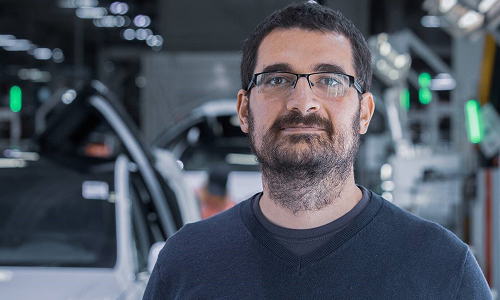
What is helicopter autorotation (and how does Skyryse automate it?)
Autorotation is a phase of flight where, in the event of an engine failure, pilots are able to safely glide to the ground. Here’s how Skyryse makes autorotations an almost non-event.
While rare, losing an engine can be one of the most unsettling thoughts for pilots of all skill levels, this holds especially true for student pilots learning to fly helicopters. Engine-out procedures can be complex and nerve wracking in any aircraft, but even more so in a helicopter. Helicopter pilots have mere seconds to quickly recover, maintain the stability of the aircraft and perform an autorotation to guide the aircraft to the ground.
What is an autorotation?
Here's a brief overview of the procedures for executing an autorotation and how Skyryse makes the maneuver an almost non-event.
For those who are interested in becoming a pilot or who may not fully understand what happens when helicopters lose an engine, it's worth noting that there is a difference between a helicopter engine failure and an autorotation itself. Autorotation is the state of flight required to safely land the aircraft in the case of an engine failure. In short, losing an engine is an event, an autorotation is a procedure to survive said event.
A number of factors can cause a helicopter to lose an engine and force a pilot to go into an autorotation. But the focus of this post is responding to an engine out scenario, not the chain of events leading to an engine failure. An autorotation is the ability for a helicopter to land when the engine fails, using only airflow and inertia to keep the blades rotating during descent. An autorotation is a controlled maneuver that requires extreme precision, quick reactions, and has very little room for error. Most helicopter pilots who have had to perform autorotations in real time will tell you that the pilot has maybe two seconds to properly configure the aircraft during a loss of engine power.
How do pilots usually perform an autorotation?
People are consistently impressed by SkyOS technology for a number of reasons—hover assist, auto take off and land, dynamic envelope protection—but it is quite often the automated autorotation that gets people’s attention. Pilots realize the challenge and the unsettling nature of an autorotation. The fact Skyryse has automated the response, leaving the pilot the ability to guide the aircraft to the ground with just a single control stick, is difficult for many to comprehend.
Consider that to perform an autorotation in a traditional helicopter, a pilot would have to:
- Use one hand to reduce the collective lever to neutralize pitch in the rotor blades
- Use another hand to control the cyclic and maintain target airspeed and directional control
- Use their feet to keep the nose in trim with the anti-torque pedals
- Communicate the scenario
- All while maintaining a high forward airspeed during glide toward the ground in order to keep positive airflow over the blades
Pilots have an incredibly tight reaction window from when the engine loses power to neutralize pitch and properly execute the autorotation. All of this at a descent rate of about 1,500 to 2,000 feet per minute. During the autorotation, if the pilot is too slow during descent or does not reduce collective pitch quickly enough, it can lead to an accident or mishap.
As shown in the above video, task saturation is dramatically reduced with the SkyOS software. With the SkyOS system in the Skyryse One:
How does SkyOS impact an autorotation recovery:
With the SkyOS system in the Skyryse One:
- The system recognizes the engine failure and immediately configures for an autorotation
- The proper power settings and airspeed are set
As opposed to an autorotation in a traditional helicopter, pilots flying the Skyryse One are left with only two choices to make:
- Where to land
- When to flare (usually at 40 to 100 feet above ground level)
Using SkyOS, the aircraft recognizes the engine issue and automatically enters into an autorotation, automating the glide, flare, and set-down. While this dramatically reduces workload for the pilot, it is important to reiterate that SkyOS is not a completely autonomous system, meaning the pilot remains in control throughout the autorotation.
Simulating an autorotation in the Skyryse One simulator:
To see a demonstration of the SkyOS features and its ability to automate an autorotation, view the below video from a Skyryse representative.





